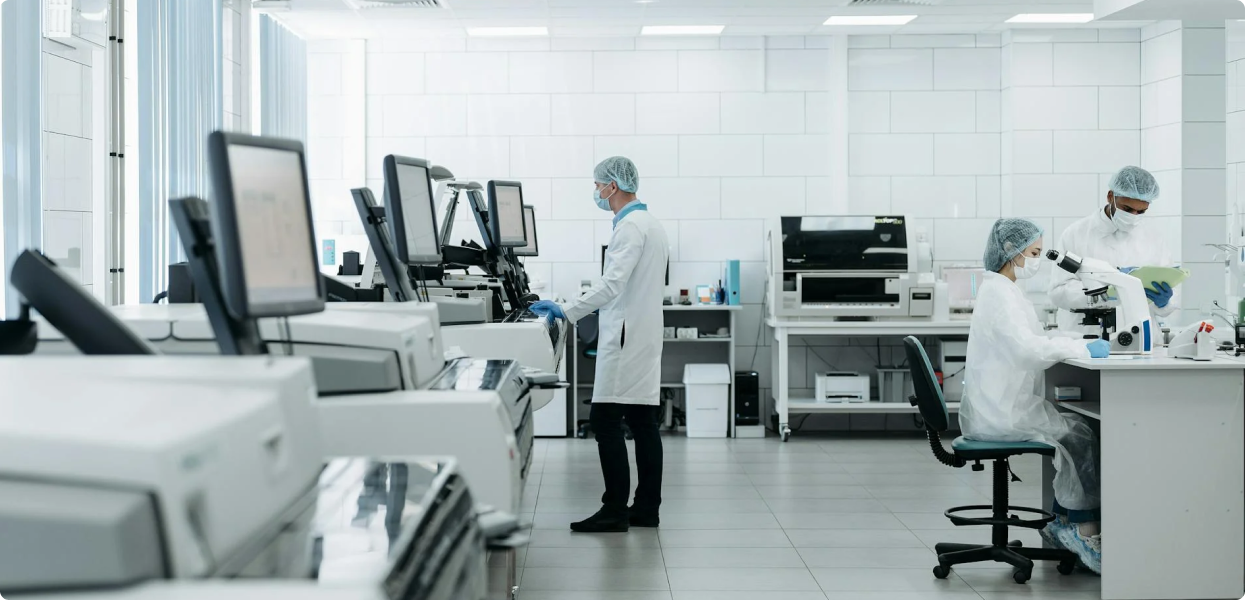Manufacturers of medical devices and critical components consistently struggle with quality control. An over-reliance on manual inspection — and the inherent human error that comes along with it — regularly leads to both financial and environmental waste, as well as potential harm to consumers and to the manufacturer’s brand reputation. Today, however, automated inspection systems are increasingly making their way onto factory floors.
Powered by advanced technologies such as AI and machine learning, automated inspection systems combine component imaging hardware with sophisticated inspection algorithms to detect defects with considerably greater accuracy, consistency, and speed than the human eye. With the right implementation approach and properly trained AI inspection models, significant quality improvement has never been more achievable for manufacturers.
In this post we’ll explore how AI-powered inspection approaches are enhancing inspection accuracy and consistency, improving production speed and throughput, reducing component waste and negative environmental impact, strengthening manufacturing compliance and traceability, and lowering operational costs while increasing manufacturer ROI.
1. Enhancing Accuracy and Consistency
Due to its repetitive nature, manual quality inspection is prone to fatigue and inaccuracy — to the extent that 68% of factory defects are believed to be caused by human error. Perhaps the biggest challenges facing manual human inspection are inconsistency and subjectivity. Human inspectors can produce variable results based on their respective levels of mental alertness, or varying interpretations of the company’s quality standards.
These inspection inconsistencies can lead to defective products passing inspection and ending up in the hands of customers, or good products getting rejected and ending up as unnecessary waste. In either case, the manufacturer is forced to deal with production inefficiency and potential financial losses.
When endeavoring to improve inspection consistency, the advantage of automated machine inspection becomes very clear. AI inspection systems inspect every component in exactly the same way every time, removing variability from the process and ensuring adherence to the manufacturer’s strict quality standards. Automated inspection systems are also able to identify the very subtle defects that might be missed by human inspectors, improving overall inspection accuracy.
How Akridata Helps:
- Akridata ingests hundreds of thousands of component images to learn and apply the critical pass/fail criteria, thereby reducing false positives and negatives and ensuring unparalleled quality inspection precision.
2. Improving Speed and Throughput
As production speed increases, so do the stress and fatigue levels of the human inspectors working on the production line. Therefore, a manufacturer’s attempts to increase component throughput often backfire in manual inspection environments, as the drop in inspection accuracy due to fatigue translates into more waste, rework, and risk for the business.
Automated inspection has no such productivity limits. AI inspection models can easily handle higher speeds, allowing manufacturers to accelerate the inspection process and increase throughput without compromising quality. Additionally, automated inspection systems can be scaled across production lines more cost-effectively than human inspection processes, creating a big leap in production efficiency and flexibility that helps manufacturers more effectively meet market demands.
How Akridata Helps:
- Akridata’s flexible, modular approach to automated inspection leverages deep learning for real-time defect detection at scale. The platform can easily be customized to meet changing production demands and adapted to the needs of any manufacturing environment.
3.Reducing Waste and Environmental Impact
The inaccuracy of manual quality control processes creates both financial waste for manufacturers, and environmental waste for communities. Rejected components that can’t be reworked typically become scrap material that gets destroyed on-site, using up additional energy and potentially releasing harmful fumes into the atmosphere. In other cases these scrap components are sent to a landfill, creating problems over time as their materials break down and seep into nearby soil and waterways.
With its greater accuracy and resource utilization, automated inspection minimizes false failures and the associated production waste that results. This allows manufacturers to save on expenses related to rework and scrap, while helping them establish more sustainable manufacturing practices and a cleaner environmental footprint.
How Akridata Helps:
- In addition to providing pass/fail inspection data, Akridata goes the extra mile to explain why each decision was made. Analyzing this contextual decision data helps manufacturers identify the root cause of defects and implement corrective measures to reduce production waste.
4.Strengthening Compliance and Traceability
In high-stakes, heavily regulated industries such as automotive and medical device manufacturing, product quality and compliance issues can cause serious financial and legal harm for manufacturers — steep fines, product recalls, costly legal battles, reputation damage, and even the suspension or revocation of critical business licenses. When relying on manual inspection processes with more limited record-keeping, tracing back to the source of quality issues can be difficult and time-consuming.
An automated inspection system records and remembers the details of every pass/fail decision, including an image of the inspected component. Not only does this allow the AI inspection system to continually learn and improve over time, it also creates a detailed audit trail that can be instrumental for compliance assurance. Such granular data collection simply isn’t possible in manual inspection processes, or comes at the great expense of speed and throughput.
How Akridata Helps:
- Akridata proactively helps manufacturers maintain compliance with regulatory standards by providing an intelligent compliance framework with documented inspection decisions. In the event of an audit, clients can easily pull auditable reports and tear sheets from the platform.
5.Lowering Operational Costs and Increasing ROI
Not only is manual quality inspection inconsistent and inaccurate, it’s also expensive. In the United States, the average salary for a QC inspector now exceeds $89,000 per year, and manufacturers typically need many inspectors on staff to cover all production lines and shifts. Inspectors also need ongoing training and certification to stay current with required industry standards and change company quality policies. These costs, along with the ~40% annual attrition in manufacturing companies, make manual inspection a pricey operational strategy for manufacturers.
Implementing automated inspection allows manufacturers to move to a leaner, hybrid quality control approach. With AI machine inspection handling the bulk of the inspection task, a streamlined crew of human inspectors can step in only as needed when an automated inspection is inconclusive. Therefore, despite the initial investment required to implement an automated inspection system, the substantial long-term cost savings created by reducing the reliance on manual inspection labor provide an attractive return on investment for manufacturers over time.
How Akridata Helps:
- By leveraging Akridata for automated component inspection, a large medical device manufacturer achieved a 40% decrease in false positives and a 30% reduction in false negatives, significantly reducing inventory wastage and safeguarding the brand’s esteemed reputation.
The Time for Automated Inspection is Now
AI-powered inspection should no longer be viewed as a luxury for medical device and critical component manufacturers, but rather a necessity in order to reduce rampant product recalls and consumer harm. And thanks to recent advances in AI vision modeling and computational power, automated inspection is now more accurate and affordable than ever.
Akridata specializes in high-accuracy AI machine vision modeling for complex manufacturing environments. Our AI-powered inspection solution uses deep learning to accurately classify component imagery in order to maximize production yields and minimize defective shipments — increasing product quality, driving down operational costs, and reducing the impact of defective products. We’re helping manufacturers redefine quality control with cutting-edge automation.
If you’d like to further explore the potential benefits of automated quality inspection in your manufacturing environment, or are looking to improve the accuracy of an existing machine vision system, reach out to our team today to schedule an exploratory conversation.
Discover how leading manufacturers are reducing defects, increasing efficiency, and cutting costs with AI-powered inspection.
Get The True Cost of Manual Inspection in Manufacturing Whitepaper



No Responses